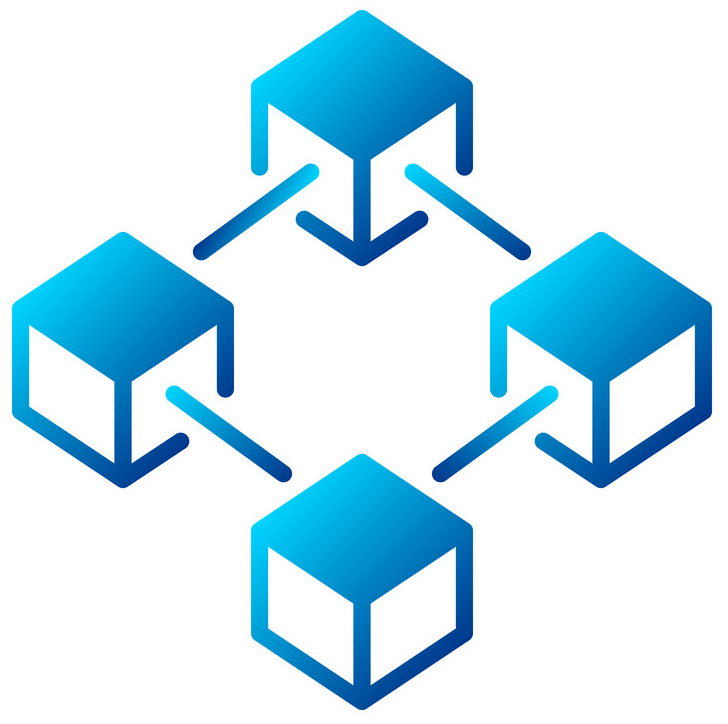Table of contents
- An Introduction to Blockchain and DLT
- Unveiling the Nature of Blockchain
- Understanding the Functionality of Blockchain
- Different Types of Blockchain
- Fundamental Elements of Blockchain
- Advantages Offered by Blockchain Technology
- Challenges and Limitations of Blockchain
- Distributed Ledger Technology (DLT)
- Distinguishing DLT from Blockchain
- Applications of Blockchain and DLT
- Security and Privacy in Blockchain and DLT
- Future Potential and Emerging Trends
- Conclusion
An Introduction to Blockchain and DLT
Blockchain and Distributed Ledger Technology (DLT) have emerged as groundbreaking technologies with the potential to revolutionize various industries. In this beginner's guide, we will delve deep into the complexities of blockchain and DLT, providing a comprehensive understanding of their fundamental concepts.
Unveiling the Nature of Blockchain
Blockchain is a decentralized and distributed digital ledger that records transactions across multiple computers or nodes. It operates within a peer-to-peer network, enabling participants to validate and store transactions transparently and in a tamper-resistant manner. The primary objective of blockchain is to establish a system that eliminates the need for a central authority while ensuring the security and integrity of recorded information.
Understanding the Functionality of Blockchain
Blockchain operates through a consensus mechanism, which guarantees that all participants reach an agreement on transaction validity before adding them to the blockchain. This consensus is achieved through a process known as mining, where participants solve intricate mathematical problems to validate and append new blocks of transactions to the existing chain. Once added, the information within a block becomes permanent and virtually immutable.
Different Types of Blockchain
1. Public Blockchain
Public blockchains, such as Bitcoin and Ethereum, are open and permissionless networks accessible to everyone. They operate on a trustless model, allowing participants to join the network, validate transactions, and contribute to the consensus process. Public blockchains leverage cryptographic algorithms to ensure transparency and security, paving the way for a wide range of decentralized applications.

2. Private Blockchain
Private blockchains, as the name suggests, are restricted to specific groups of participants. These blockchains are typically employed within organizations or consortia where trust is established among the participants. Private blockchains offer increased privacy, control, and efficiency compared to public blockchains, making them well-suited for enterprise use cases.

3. Consortium Blockchain
Consortium blockchains represent a hybrid model that combines aspects of both public and private blockchains. In a consortium blockchain, a group of organizations collaborates to govern and maintain the network. Consortium blockchains provide the benefits of decentralization and transparency while allowing consortium members to define rules and access permissions.

Fundamental Elements of Blockchain
To gain a deep understanding of blockchain's inner workings, let's explore its fundamental components:
1. Blocks
A block serves as the fundamental unit of data in a blockchain. Each block contains a set of transactions that have been validated and confirmed by network participants. Additionally, blocks include a unique identifier called a hash, which is generated by applying cryptographic algorithms to the block's contents. The hash ensures the integrity of the block and provides a reference to the previous block in the chain.

2. Transactions
Transactions represent recorded actions or operations within the blockchain. They encompass various types of digital exchanges, such as financial transactions, smart contracts, or asset transfers. Each transaction is associated with specific participants and incorporates relevant data, including the sender, receiver, and details or amount of the exchange.

3. Cryptography
Cryptography plays a pivotal role in securing blockchain networks. It involves the utilization of advanced mathematical algorithms to encrypt and decrypt data. Blockchain leverages cryptography to ensure the confidentiality, integrity, and authenticity of transactions and blocks. Techniques like digital signatures and hash functions provide mechanisms for verifying transaction validity and preventing tampering or unauthorized changes.

4. Consensus Mechanisms
Consensus mechanisms are protocols that enable participants within a blockchain network to agree on transaction validity and achieve a shared ledger state. Various consensus mechanisms have been developed, each possessing unique advantages and characteristics. Prominent consensus mechanisms include Proof of Work (PoW), where participants compete to solve computational puzzles, and Proof of Stake (PoS), where participants "stake" their cryptocurrency holdings to secure the network.

5. Decentralization
Decentralization serves as a fundamental aspect of blockchain. Instead of relying on a central authority or intermediary, blockchain distributes control and decision-making power among network participants. Decentralization enhances security, reduces the risk of single points of failure, and fosters trust within the network. It enables peer-to-peer interactions and empowers individuals to maintain control over their data and digital assets.

Advantages Offered by Blockchain Technology
Blockchain technology presents numerous advantages that have contributed to its widespread adoption:
- Enhanced Security: Blockchain's cryptographic techniques provide a robust defense against tampering, fraud, and unauthorized access. The immutability of the blockchain ensures that once data is recorded, it becomes incredibly challenging to alter or delete.
- Transparency: Blockchain fosters transparency by enabling all participants to view and verify the complete transaction history. This transparency enhances trust among participants and reduces dependence on intermediaries.
- Efficiency and Cost Reduction: By eliminating the need for intermediaries and streamlining processes, blockchain reduces costs and enhances operational efficiency. It enables faster and more secure transactions, particularly in cross-border payments and remittances.
- Traceability: Blockchain facilitates transparent and immutable record-keeping, making it easier to track the origin and movement of assets, goods, or digital files. This feature is particularly valuable in supply chain management, as it helps detect fraud and counterfeits, and ensures product authenticity.
- Trust and Disintermediation: Blockchain eliminates the necessity for traditional intermediaries, such as banks or notaries, by providing a decentralized and trustless environment. Participants can transact directly with each other, reducing costs, delays, and the need for trust in a central authority.
Challenges and Limitations of Blockchain
While blockchain offers significant advantages, it also faces several challenges and limitations:
- Scalability: As blockchain networks expand, they encounter difficulties in efficiently handling high volumes of transactions. The decentralized nature of blockchain necessitates consensus among participants, potentially leading to slower processing times and limited scalability. However, ongoing research and development endeavors aim to address this issue through solutions like layer-two protocols and sharding.
- Energy Consumption: Certain blockchain networks, especially those reliant on proof-of-work consensus mechanisms, require substantial computational power and energy consumption. This raises concerns about the environmental impact of blockchain technology. Efforts are underway to develop more energy-efficient consensus mechanisms, such as proof-of-stake and delegated proof-of-stake.
- Regulatory and Legal Issues: Regulatory and legal frameworks surrounding blockchain and cryptocurrencies are still evolving. Different jurisdictions adopt varying approaches, leading to uncertainty and regulatory challenges for organizations and individuals operating in the blockchain space. Collaborative efforts between industry stakeholders and regulatory bodies aim to address these concerns.
- Privacy Concerns: While blockchain provides transparency, storing sensitive data on the blockchain raises privacy concerns. As blockchain transactions are visible to all participants, additional measures are required to protect confidential or personally identifiable information. Privacy-enhancing technologies like zero-knowledge proofs and selective disclosure can help mitigate these concerns.
Distributed Ledger Technology (DLT)
DLT encompasses blockchain and other similar technologies, serving as a broader concept. It refers to a digital system for recording, sharing, and synchronizing transactions or information across multiple participants. While blockchain represents a specific type of DLT, DLT systems can differ in their design and implementation.
Distinguishing DLT from Blockchain
DLT is a more inclusive term that encompasses various forms of distributed ledgers, including blockchain. While blockchain is distinguished by its sequential chain of blocks, not all DLT systems utilize blocks and chains. DLT employs different data structures and consensus mechanisms to achieve distributed consensus and maintain a shared ledger among participants.

Applications of Blockchain and DLT
Blockchain and DLT have found applications across diverse industries. Here are notable examples:
1. Cryptocurrencies and Financial Services
Blockchain has gained recognition for its application in cryptocurrencies like Bitcoin and Ethereum. It enables secure and decentralized digital currencies, eliminating the need for traditional banking intermediaries. Blockchain provides a transparent and immutable record of transactions, ensuring trust and enabling new financial services and business models.
2. Supply Chain Management
Blockchain has the potential to transform supply chain management by enhancing transparency, traceability, and efficiency. Stakeholders can track the movement of goods, verify authenticity, and streamline processes by recording transactions on the blockchain. Real-time visibility into supply chains reduces counterfeiting, improves trust among participants, and enhances overall supply chain efficiency.
3. Healthcare
Blockchain can improve data privacy, security, and interoperability in the healthcare industry. By securely storing and sharing patient records on the blockchain, healthcare providers can enhance data integrity, streamline access to medical information, and facilitate efficient healthcare management systems. Blockchain also holds promise in clinical trials, drug traceability, and combating counterfeit pharmaceuticals.
4. Voting Systems
Blockchain-based voting systems can revolutionize elections by providing transparency, immutability, and security. Recording votes on a blockchain makes it virtually impossible to alter or manipulate the results. Blockchain-based voting ensures verifiability, instills trust in the democratic process, prevents voter fraud, and enhances the integrity of elections.
5. Intellectual Property Protection
Blockchain can play a vital role in protecting intellectual property rights. By recording ownership, licenses, and transactions related to patents, copyrights, and trademarks on the blockchain, it provides an immutable and tamper-proof record of intellectual property. This enhances the authenticity of intellectual property claims, simplifies licensing processes, and reduces the risk of infringement.
Security and Privacy in Blockchain and DLT
![]()
Blockchain and DLT employ diverse security measures to safeguard against unauthorized access, tampering, and fraud. These measures include cryptographic algorithms, digital signatures, and consensus mechanisms. However, privacy concerns arise when sensitive data is stored on the blockchain. While blockchain transactions are transparent, privacy-enhancing techniques like zero-knowledge proofs can ensure confidentiality and selective disclosure of sensitive information.
Future Potential and Emerging Trends
The future of blockchain and DLT holds tremendous potential for innovation and disruption. Here are some emerging trends and areas of exploration:
- Interoperability and Integration: Efforts are underway to enable seamless interoperability between different blockchain networks and protocols. This would facilitate the transfer of assets and data across disparate blockchain systems, fostering collaboration and enhancing functionality.
- Scalability Solutions: Researchers and developers are actively working on scalability solutions to address the limitations of blockchain networks. Techniques such as sharding, sidechains, and layer-two protocols aim to improve transaction throughput, reduce latency, and enable efficient scaling of blockchain networks.
- Integration with Emerging Technologies: Integrating blockchain with other emerging technologies like the Internet of Things (IoT), artificial intelligence (AI), and machine learning (ML) opens up new possibilities. Blockchain can provide a trusted and decentralized infrastructure for secure IoT data exchange, facilitate AI and ML model training, and enable decentralized autonomous organizations (DAOs).
- Energy Efficiency: Concerns over energy consumption associated with certain blockchain networks, particularly those using proof-of-work consensus, have led to innovations in consensus mechanisms. Proof-of-stake and delegated proof-of-stake aim to reduce energy consumption and make blockchain more sustainable.
- Regulatory Frameworks: As blockchain and cryptocurrencies gain wider adoption, regulatory frameworks are evolving to address legal and compliance issues. Governments and regulatory bodies are actively exploring ways to provide clarity, establish guidelines, and protect consumers while fostering innovation in the blockchain space.
Conclusion
Blockchain and DLT are transformative technologies that offer secure, transparent, and decentralized systems across various industries. Understanding the fundamentals of blockchain and DLT is crucial for individuals seeking to leverage their potential in today's digital landscape. From financial services to supply chain management, and healthcare to voting systems, blockchain and DLT have the power to reshape industries, foster trust, and unlock new opportunities for innovation and collaboration.